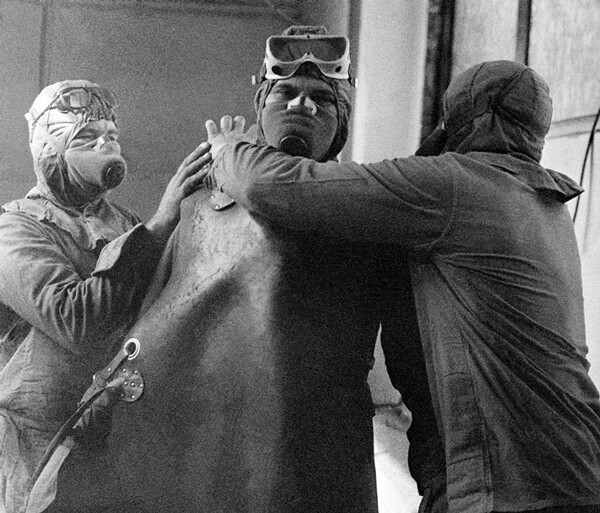News & Articles
Browse all content by date.

Commercial media recollections of the 1986 Chernobyl catastrophe almost always minimize its global impact. A New York Times editorial last Dec. described the April 26 explosions and fires as “a volcano of deadly radioactivity that reached Poland and Scandinavia.” This picture is both factually true and grossly understated -- because Chernobyl’s carcinogenic fallout went far beyond northern Europe and all around the world -- a fact that is easy to verify.
For example, the UN Scientific Committee on the Effects of Atomic Radiation (UNSCEAR) concluded in 2011 that the disaster “Resulted in radioactive material becoming widely dispersed and deposited … throughout the northern hemisphere.” Then, hammering the lesson home like a drill sergeant, UNSCEAR’s report (“Health effects due to radiation from the Chernobyl accident”) repeats the phrase “throughout the northern hemisphere” at least five times on pages 310, 311, 315, 316, and 343. Chernobyl’s hemispheric contamination was well known long before the UNSCEAR review, noted in hundreds of books, journals and scientific papers. The March 30, 2005 Oxford Journals reported, “The releases of radioactive materials were such that contamination of the ground was found to some extent in every country in the Northern Hemisphere.” An Environmental History of the World (2002) by Donald Hughes says, “There were measurable amounts throughout the Northern Hemisphere.”
Yet trivialization is the mainstream media rule, especially after three simultaneous reactor melt-downs at Fukushima-Daiichi have contaminated the whole of the Pacific Ocean. On April 23, Abu Dhabi’s “The National” said about Chernobyl: “Half a million ‘liquidators,’ mostly military reservists from all over the Soviet Union, tried to clean up the affected area.” This is flatly untrue, because no one decontaminated the entire Northern hemisphere. Soviet conscripts worked only the region knows as the “exclusion zone” around Chernobyl reactor No. 4 in Pripyat, Ukraine.
Understatements rewrite history, deceptively misinform
Understatements were the rule in the 1990s. The Milwaukee Journal-Sentinel, on April 27, 1998, described “a deadly cloud of radiation across large sections of Russia and Europe.” ¶ The Appleton, Wisc. Post Crescent, April 26, 1998, said, “Ukraine and parts of Russia were hard hit.” ¶ The New York Times, on April 23, 1998, depicted the disaster as “a poisonous radioactive cloud north of Kiev.” ¶ The Los Angeles Times, on April 27, 1995, limited the fallout to “a radioactive cloud across Ukraine, Russia and parts of Europe.” ¶ A June 1, 1998, Associated Press story restricted the “deadly cloud of radiation” to “large sections of Russia and Europe.”
The website GlobalVoices.org reported this April 19: “Chernobyl… caused radioactive material to be spewed into the atmosphere, exposing hundreds of thousands -- if not millions -- of people in Ukraine, Belarus, Russia, and elsewhere in Eastern Europe to extremely high doses of radiation.” In fact, half of Chernobyl’s total fallout was spewed far beyond the three hardest-hit states, going to every corner of the hemisphere.
Of course ignoring the fact that reactor disasters have poisoned the whole earth misinforms the public, but why?
One reason is that downplaying the severity of Chernobyl -- and Fukushima-Daiichi as well -- sugar-coats the threat posed today and every day by operating power reactors beyond their original license limits, or near earthquake faults, volcanic regions, or tsunami zones. The hidden agenda behind the profit-driven media’s deliberate belittling of reactor accidents -- and the dangers of radiation -- is to protect significant advertising revenue. Big utilities, big pharma, big mining, big universities, and big weapons labs makes billions of dollars from increasing the “background” level of radiation. Official background exposure was 170 millirems per-year for decades; 18 months after Chernobyl it doubled to 360 mR/yr; and it nearly doubled again a few years ago to 620 mR/yr.) “Nuclearists” intend to keep it this way, even if it means buying pricey ads claiming that reactors are safe and small radiation doses are harmless.
Chernobyl Doused the Whole Hemisphere
Early on in Chernobyl reporting, it was common for the Associated Press and others to broadcast its global impact using plain language. On May 14, 1986, AP noted, “An invisible cloud of radioactivity… has worked its way gradually around the world.” On Oct. 9, 1988, it said flatly, “Chernobyl … spewed radiation worldwide.” And it reported in the Duluth Herald, May 15, 1986: “Airborne radioactivity from the Chernobyl nuclear accident is now so widespread that it is likely to fall to the ground wherever it rains in the United States, the EPA said.” This warning should never stop being flabbergasting, and should have been the death knell for nuclear power.
The Duluth News-Tribune & Herald reported May 22, 1986: “For the second time since the [Chernobyl disaster] last month, a slightly elevated level of radioactive iodine has been found in a Minnesota milk sample, state health officials said.” Western officials were precautionary. The AP reported May 15, 1986 that “State authorities in Oregon have warned residents dependent solely on rainwater for drinking that they should arrange other supplies for the time being.”
In his 2002 book An Environmental History of the World, Donald Hughes notes, “For example, an increase of [radiation in rainwater] recorded on May 12 in Washington State was more than 140 times the background level measured immediately before the Chernobyl cloud reached the USA.” Today, remember to read corporate minimization of Chernobyl’s effects with a radioactive grain of salt.
| Tweet |

